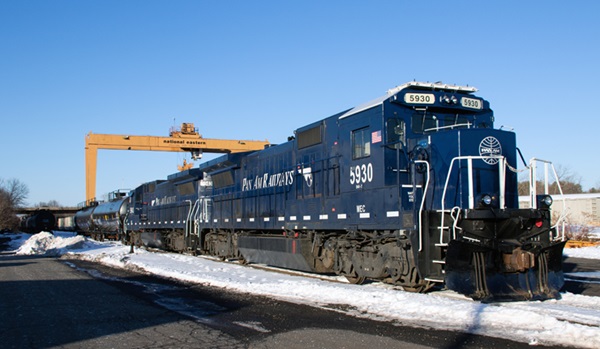Looks like the CSX-PAR deal hit a snag; as it explicitly invites reapplication, and as CSX has said it'll revise, I assume that it isn't fatal. However, it'll push things back... 6 months to a year?
WASHINGTON — It’s back to the drawing board for CSX Transportation’s proposed acquisition of New England regional Pan Am Railways. The Surface Transportation Board today rejected as incomplete CSX’s application to acquire control of Pan Am. “The Board finds that the application fails to include...

www.trains.com
The STB's response is chock full of breadcrumbs to other "major" transactions from recentish-past caselaw that do provide a model for what they're looking for, so definitely not fatal. They wouldn't have provided such obvious direction if that wasn't exactly what was gonna sway them.
From CSX's standpoint, the original app played it as conservative as possible re: their business plans for New England, emphasizing continuity of service more than where they were going to drive biz increases the hardest. Intentionally opaque so direct competitors like CP wouldn't get any clear signals on how they planned to magnificent bastard their way into superior alliancing from the Maritimes ports, for instance. Vagueness of that sort was fine and dandy for a minor transaction. Major requires them to spell it out more. They've already spelled it out internally and (via NDA) with most of the affected customers. It won't end up hurting them or changing anything to have to be more publicly specific now. Vagueness was mainly a tactic for keeping the Wall Street hot-stove in optimal guessing mode for their gains.
Since the customers already know the whole-enchilada plan, a resubmit won't end up creating any more potential adverse-filing litigants. Those folks are already out...most had no specific comment other than preferring "major" review...and the remaining grievance potential will be lower not higher with a re-file (more time for the least-serious scammers to gum up the works, though!). Beware any "Oh noes! They're gettin' cold feet! Ready to call this off!" insider pronouncements, as they're probably sourced from somebody with a direct monied rooting interest in seeing this fail. The sequence of events this week runs completely contrary to how they'd be proceeding if it were indeed on verge of collapse (i.e. Wall Street is going to render its displeasure on them loudly if the re-file is just a "deepfake" to eventual pulling the plug).
Apparently this also isn't a sign of any major policy shift by the Biden STB, either, as most of the board vote for this re-file decision was from Trump holdovers. Probably means elevation to "major" was a high-odds chance all along, and CSX simply didn't see that as big enough setback to be the least bit risk-averse about trying to squeak it through as "minor" transaction. If they feared this very re-file outcome much, they would've provided more than minimal biz detail in the first place.
What it does unfortunately signal is that the KC Southern megamerger has gone so off-the-hook now that it's going to paralyze the perennially underfunded/overworked Surf Board for the balance of '21. KCS has now broken it off with CP and tried to elope instead with late bidder CN in a *MUCH* more antitrust-fraught union, with extra stock voting-trust sketchiness on top. It's quite likely the Board had excess motivation to throw their own hides a life raft by not needing to hash out 2 major transactions in one year. CN-KCS is shaping up to be such a black hole singularity time/resource suck with so many unwieldy third parties stirring the pot that they simply said "nuts to this; how bout we do you next year instead?"



